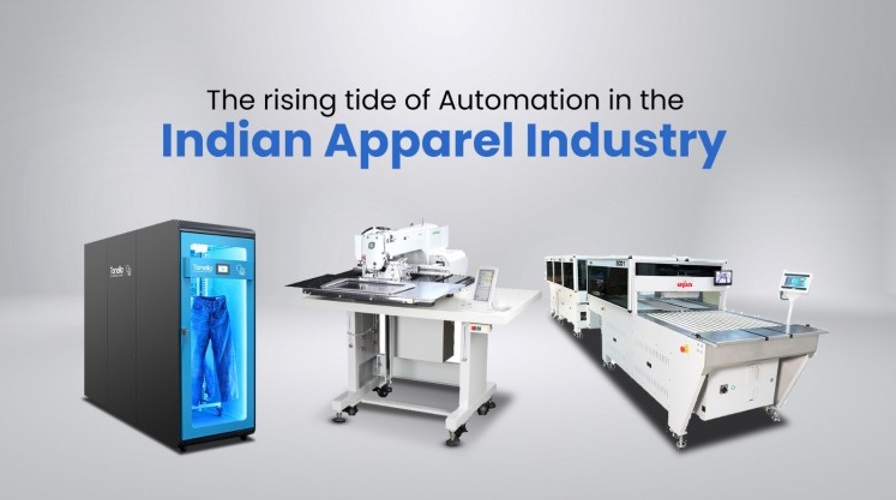The Automation wave for Indian Apparel manufacturing is gathering momentum, helping meet dynamic demand cycles and delivering shorter lead times.

To get new styles into stores more quickly, fashion companies/ brands are adopting the concept of “see now, buy now”.
Today’s fashion-conscious consumers cannot wait months to own the latest fashion runway styles. Millennial consumers demand and expect instant gratification.
Fashion brands like H&M, Inditex, Uniqlo and Forever 21 to name a few—produce fresh-off-the-runway items and sell them in stores in a matter of weeks. Consumers love this and reward fashion brands for their speed-to-market with a larger share of their wallets.
What does this mean for garment manufacturing?
The traditional fashion cycle consists of broadly three phases: planning, design, and product development; sell-in; and production and delivery. The length of each phase varies between as short as short as 12 weeks or as long as 30 weeks.
Fashion brands are giving up this traditional way of planning seasons for shortened fashion cycles.
On-demand manufacturing’ turns the process of apparel production on its head and gives rise to the idea of smart, technology-driven factories – micro-factories – for apparel manufacturing.
Automation scales productivity in apparel manufacturing while aiming to take tedious jobs away from manual interventions.
There is a widespread use of automation in the production of apparels including Fabric Inspection, CAD & CAM, Grading, Pattern Making, Fabric Spreading and Cutting, Sewing, Pressing, Material Handling an Radio Frequency Identification (RFID).
Automation equips garment manufacturers to meet the exacting expectations of fast fashion, small batch production and the entire trend of ‘see now, own now’.
Here is how Automation makes garment manufacturers more competitive in this fast-evolving business ecosystem:
More Production in Less Time: Due to the automation of key processes in the apparel industry, it is possible to produce and export more products/garments in less time. For example: Automated sewing machines save time and increase productivity. A Sewbot can produce 15-20 T-Shirts in an hour.
Increase in Product Quality: with automation, manufacturing high quality and flawless products than before.
Decreasing Lead Time to Market: In the age of fast fashion every buyer wants products in a short time and at a low price.
Eliminating repetitive manual tasks: Certain manual tasks like packing and folding which is a finishing process were always labour intensive. Automation quickens the process, standardizes processes at scale. Common errors can be avoided since the machines are programmed to work with accuracy thus reducing error rate.
The cost of production becomes considerably less since one-time investment on a machine can replace the recurring wage payments and can produce more at less cost – pushing unit economics into play and reducing operating expenses.
Automation is a way of life in other established apparel manufacturing countries and the automation wave has seeped to the very bottom of their manufacturing operations. India is now catching up with the automation of manufacturing operations becoming a priority for some of the top Indian apparel exporters and Indian clothes labels.
Automation is growing in scope for Indian Apparel Manufacturers and the focus is moving beyond just increasing productivity. Manufacturers want to build value-added capabilities and minimize their frequent outsourcing requirements to clock higher revenue and yield. Magnum Resources’ team of subject matter experts can power your Automation story as the automation adoption rate in the fashion industry accelerates.
Reach out and schedule an exclusive one-on-one meeting with your leadership team and our automation domain experts by emailing us your automation scope of work and priorities to info@magnumresources.co.in . We look forward to connecting with Indian Apparel Manufacturers and Fashion brands.